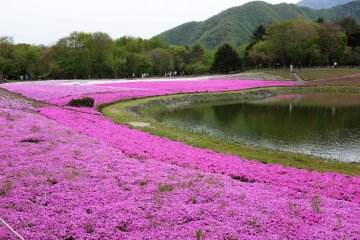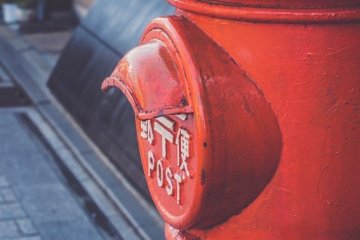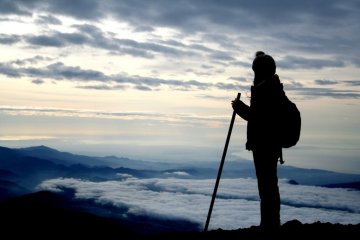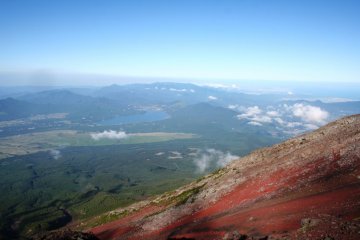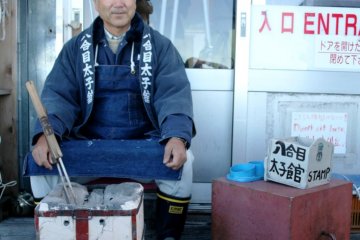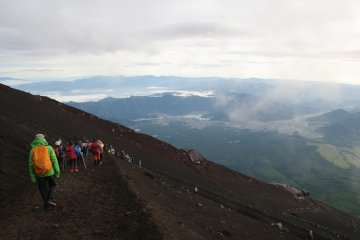Climbing Mt.Fuji is in the top 3 on the to-do-list for many travelers.
The three most frequently asked questions are:
- Which route should we take?
- How do we get there?
- What should we prepare?
Here are my answers based on my experience with Mt.Fuji:
- Kawaguchiko/Yoshidaguchi route
This is the most popular route among Japanese climbers. Located 2300 meters above sea level, this trail is the shortest to the summit. It also has the largest number of lodges along the way.
- By bus
There are many bus tours available at the travel desk by any train station. For about 13,000 yen, the package includes transportation between Shinjuku and the 5th station at Fuji, lodging (dinner and breakfast), and a hot spring after the climb. Of course, you can do everything on your own, but the price is somewhat similar. Depending on when you go, all the lodges may be fully booked so you should make a reservation beforehand if you are staying at a lodge to see the sunrise. Accommodation is something like 5,000 yen per night.
- Lots of layers
I must admit that my friend and I climbed without any preparations. Part of the reason could be that we were quite fit and thought it wouldn’t be too cold. Dead wrong… Even in summer the temperature at the summit easily dips below freezing. The day we went was very sunny, but when we reached the top, there was a storm with icy rain. We were almost freezing to death. So I warn you from my experience: you should bring warm clothes (down/ fleece jacket) and gloves!
*Editor's note: If you prefer someone else to worry about these sorts of details, you might want to get in touch with a guide such as Nori.
We arrived at the 5th station at 12:30pm. Since the 5th station is already 2300 meters above sea level, many websites recommend taking a bit of a rest there to adjust to the altitude. We spent about an hour eating lunch and shopping for a pilgrim’s staff. This pilgrim’s staff is an octahedral wooden stick which climbers buy to collect marks along the way. At each lodge on the trail, there is a person who burns a mark on the staff with a hot iron. Each mark is unique and costs about 200-300 yen, so getting everything can be expensive, but it will be a treasure of your experience in Japan for sure. Also, it’s very useful when you climb back down. VERY useful.
We started climbing about 1.30pm. It was a very sunny day but there were enough clouds to cut the direct sunlight to prevent us from getting dehydrated. The trail itself wasn’t too hard. It was well-tended and almost flat. It took us about 4 hours to get to the 7th station. On the way, we had a gorgeous view of Lake Yamanaka surrounded by mountains. After the 7th station, the trail goes uphill and gets very rocky. It wasn’t tough to climb, however, the trail was packed with other climbers. If you are climbing from the Kawaguchiko route, try to avoid the weekends.
After about an hour, we reached our lodge. The staff at the lodge were very nice, but after dinner they immediately send you off to bed. It was only 7pm! We woke up at 2am and headed out to reach the top. We got a breakfast bento to take with us. Lots of people are heading to the summit around this time, so even if it's only about 2 hours from the 8th station to the top, you should expect to take 3 hours. Once you see a shrine gate, the summit is almost there.
Unfortunately on this occasion there was a storm on the top, so we weren’t able to see the sunrise. But when the color of the cloudy sky changed to bright orange, everyone knew that the sun was over the horizon. If it’s sunny and you have some physical strength left, you should definitely walk around the crater.
We started climbing back down around 6:30am. As we were descending, the clouds cleared and a serene, calm dawn landscape greeted us. It was very peaceful. After about 5 hours, we finally got back to the 5th station and waited for our bus to take us to a local hot spring.



